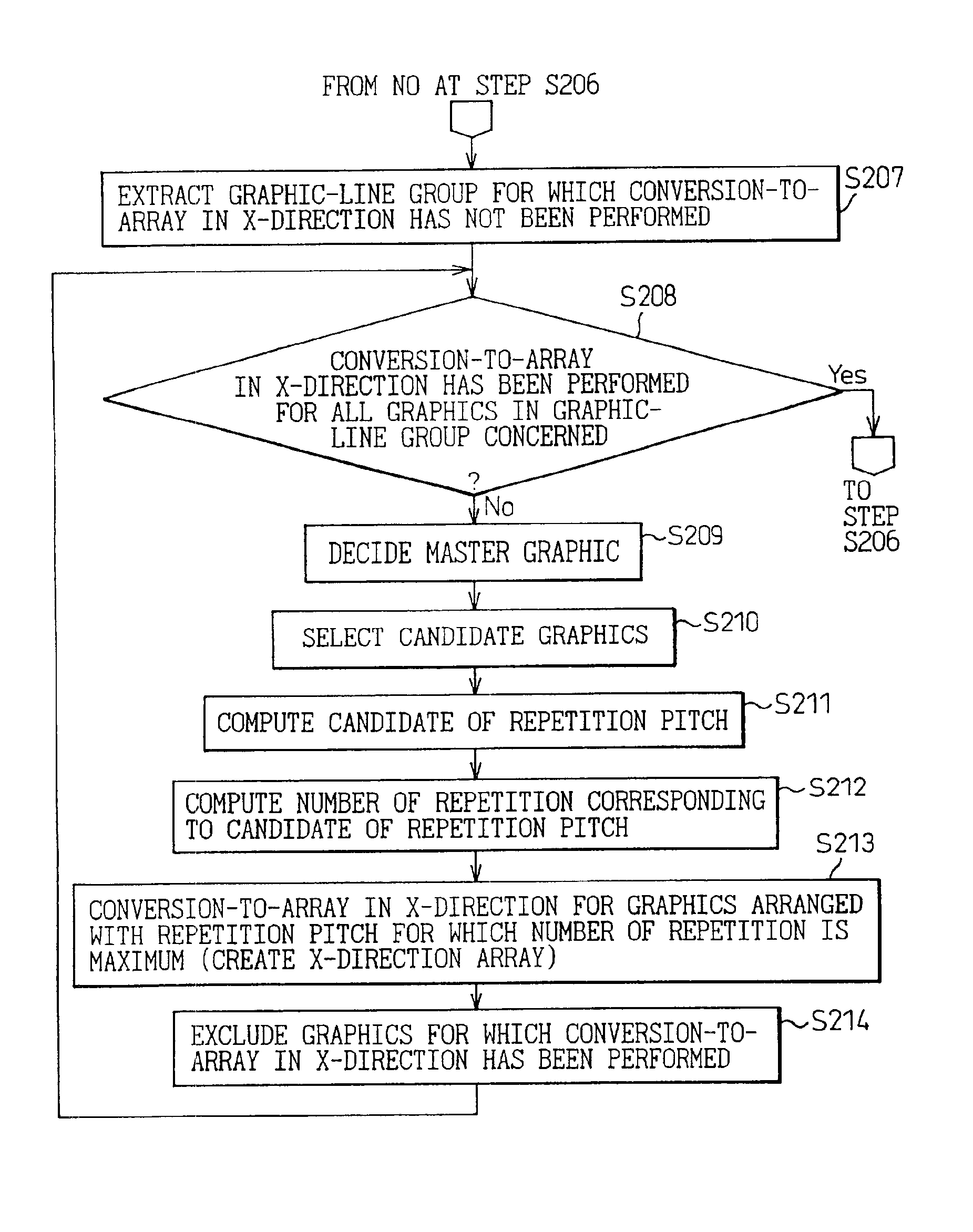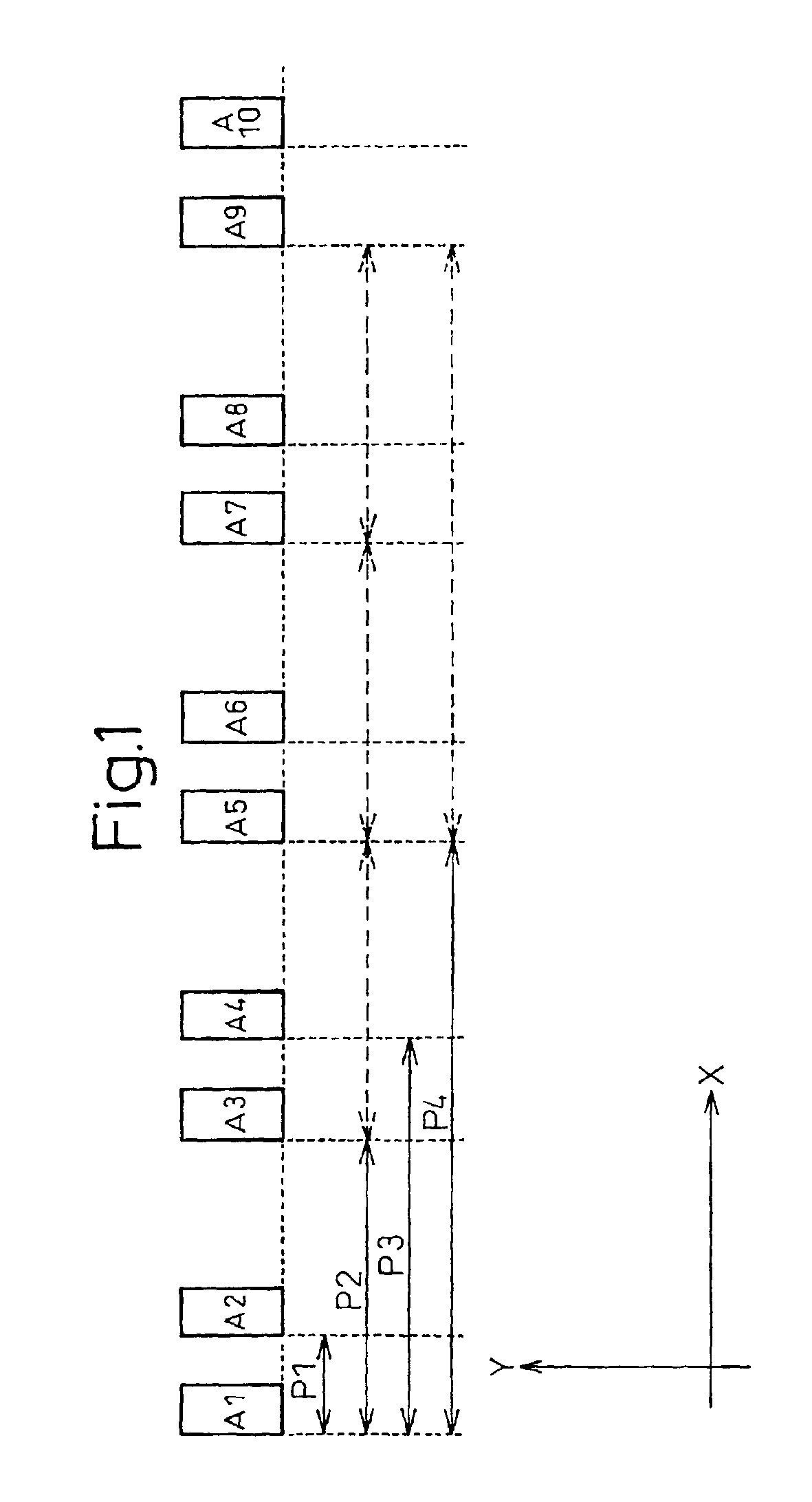Method of efficiently converting-to-array and compressing data in a process for converting mask patterns of a LSI
- Summary
- Abstract
- Description
- Claims
- Application Information
AI Technical Summary
Benefits of technology
Problems solved by technology
Method used
Image
Examples
Embodiment Construction
[0030]Before proceeding to a detailed description of the preferred embodiments a prior art will be described with reference to the accompanying drawings relating thereto for a clearer understanding of the differences between the prior art and the present invention.
[0031]First, the principle of a conventional conversion-to-array process will be described.
[0032]FIG. 10 depicts the principle of the conventional conversion-to-array process. In this figure, the repeatedly arranged patterns of the mask patterns of a LSI are expressed as, for example, the graphics A1 to A6. It is assumed that all the graphics A1 to A6 are congruent each other.
[0033]In the conventional conversion-to-array process, a master graphic is selected as a reference graphic for the repetition on a line. Next, the interval between this master graphic and a graphic just next to the master graphic is taken as a repetition pitch. Then, a group of the graphics arranged with this repetition pitch is searched in the graphi...
PUM
 Login to View More
Login to View More Abstract
Description
Claims
Application Information
 Login to View More
Login to View More - R&D
- Intellectual Property
- Life Sciences
- Materials
- Tech Scout
- Unparalleled Data Quality
- Higher Quality Content
- 60% Fewer Hallucinations
Browse by: Latest US Patents, China's latest patents, Technical Efficacy Thesaurus, Application Domain, Technology Topic, Popular Technical Reports.
© 2025 PatSnap. All rights reserved.Legal|Privacy policy|Modern Slavery Act Transparency Statement|Sitemap|About US| Contact US: help@patsnap.com



